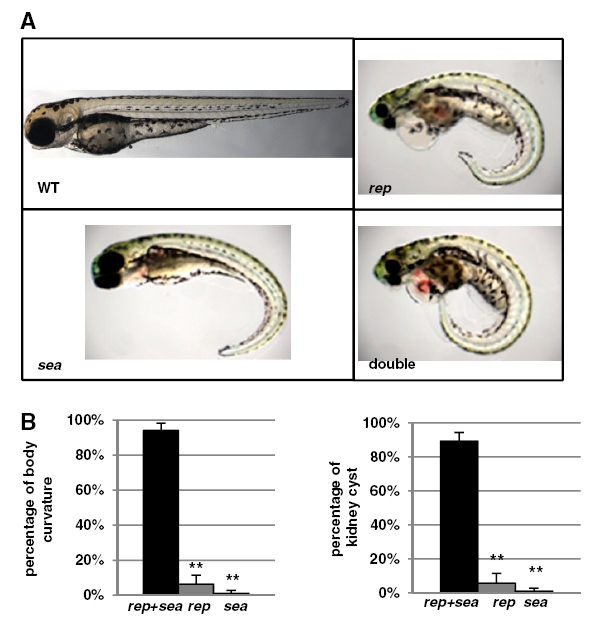Fig. S4
Reptin genetically interact with seahorse/lrrc6. (A) Reptinhi2394; seahorsehi3308 double mutants (double) show similar cystic kidney phenotype as single mutants of either gene at 4 dpf. (B) Percentage of embryos showing body curvature (Left) and kidney cysts (Right). A total of 89.3% embryos show kidney cyst formation and 94.1% embryos show body curvature in the reptin MO and seahorse MO coinjection group (rep+sea), compared with 1% cyst formation and body curvature in the seahorse MO and control MO coinjection group (sea) or 5.7% cyst formation and 6.2% body curvature in the reptin MO and control MO coinjection group (rep). Data are represented as mean + SD from three replicates. **P < 0.01.

